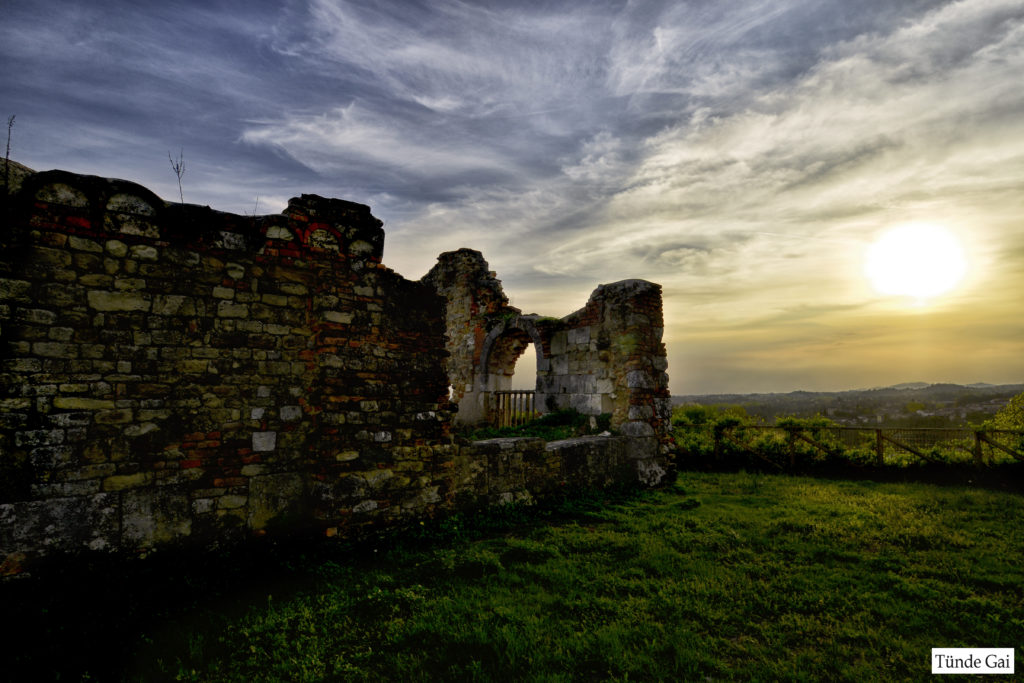
The origin of the village of Piovà probably dates back to 1041 with the establishment of the Plebanate of Meyrate, which was located in the area of the current cemetery and which was devoted to the Church of Saint George.
Piovà was formerly named Plebata and, as was true of other villages in the area, was part of the sequence of events in Cocconato County and shared in the destiny of the Earls of Radicati. In the year 999, the belongings of the Radicatis were seized by the Church of Vercelli, for following King Arduino in his war against Emperor Frederick Redbeard, who assigned Cocconato to William of Monferrato. They were later re-instated and received investitures and privileges from Frederick II of Swabia in 1249, and from Charles of Anjou through the time of Charles V in the 1530s.
Piovà sprung up in the area of the old church, and later the area was developed so it extended towards the hilly spur of Montecomigliano where the Radicatis built the old Castle of Plebata. The old Parish consequently left the old location of Saint George to move nearer to the castle and the Church of Saint Michael. The Community of Plebata first appeared in a document dated 12 August 1339.
After a long peaceful period wars started again between the Duke of Savoy, Amedeus IX and William VIII Marquis of Monferrato, who occupied Piovà’ in 1431.
Meanwhile the ancient power of the Radicatis, who had been supported since 1458 by the Duke of Milan, Francesco Sforza, was waning. On 8 February 1586, Cocconato definitively yielded to the Duke Carlo Emanuele I of Savoy.
The village of Piovà, long owned by the Marquis of Monferrato, followed their destiny.
In 1617, after the war between the Savoy and the Gonzaga, supported by the King of Spain, Piovà was turned over to the Gonzaga. The Monferrato went through a dreadful period with constant battles among the Savoyard, the Spanish, and the French armies. In 1625 the village was burned down by the Spanish. In addition to war and famine, the plague struck again, after doing so in the years 1503, 1522, and 1530.
In 1637 the men in Piovà took an oath to the Duke Charles II of Monferrato.
During that same period, a school offering education to youngsters and support to people willing to be in holy orders was created, thanks to the generous donation of Don Pietro Francesco Barberis, who was a parish priest and vicar of Piovà, and who died in 1682.
The community also wanted to make the troops quartering in winter subject to the payment of local taxes. Those were the first signs of a harsh conflict with the feudal, Count Ricci, that lasted from 1674 to 1727.
After the victory of the Piedmont army over the French army and the liberation of Turin on 7 September 1706, Vittorio Amedeo II took Monferrato, Sicily, and was given the title of King. The king took possession of the Dukedom of Monferrato on 16 August 1708.
During the French Revolution, the piedmont population remained faithful to the monarchy, however, things changed after the victories of Bonaparte and the establishment of a temporary government in1798.
On 16 January 1799, Piovà celebrated the republican “Regeneration”. However, even though the republican government canceled the feudal homages, which gave some advantages to the villages, the burden of the state tax levies was hard on the citizens. Also there was a growing dissatisfaction due to the conscription of young people, who were sent to distant territories to fight. The fall of Napoleon and the consequent Restauration was greeted with joy.
Later, the wars for the Unity of Italy resulted in the annexation of Trento and Trieste. The shift from Monarchy to Republic did not meet with the approval of the citizens of Piovà, because a majority of their citizens voted for the monarchy, as did almost all the other country villages.
During the Fascist era, Piovà, Castelvero, and Cerreto d’Asti were unified into a single village.
In 1947 the single village arrangement was changed, and Castelvero became in all respects part of Piovà while Cerreto d’Asti decided to become independent once again. This issue triggered a long battle over boundaries between the two villages that only ended in 2005 through a ruling of the Council of State.
